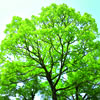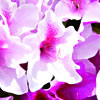Maizuru City
Maizuru City - Aiming to be a “vibrant town with hope for the future”
Maizuru City is located almost in the central part of Honshu, northeast of Kyoto Prefecture. It is situated within the 100km zone from the Keihanshin area. About 80% of the city area is covered with forest. The town areas are built on the plains that face Maizuru Port and approximately 70% of the population is concentrated there.
The Maizuru Port entrance is in Wakasa Bay. This port is a well-sheltered natural harbor. Its approximately 98km-long coastline is a ria (or drowned river valley) with an intricate mix of coves and capes. It is designated as a part of the Wakasa Wan Quasi-National Park.
In the Higashi-Maizuru and Kitasui districts, there are red brick warehouse buildings that were built from the Meiji period to Taisho period as storage warehouses for military munitions of the Maizuru 'Chinju-fu (naval base).' The 12 red brick buildings that still exist maintain the characteristics of those days even now after the passing of 100 years and create a unique setting. Eight among the 12 buildings were designated as national important cultural properties in 2008. Maizuru City renovated five of those warehouses in an effort to make the red brick buildings a strategic hub for tourism and the whole area was opened as "Maizuru Red Brick Park" in May 2012. The city is moving forward with urban planning that takes advantage of the red brick buildings.
Maizuru served as a "repatriation port" for 13 years after the end of the war and received approximately 660,000 repatriates and 16,000 sets of remains, mainly from Siberia of the former Soviet Union and former Manchuria of China. The repatriates, who sailed into Maizuru port and set foot on Maizuru from Taira-sanbashi Pier, shed tears of joy and exchanged greetings with their receiving families. On the other hand, every time a repatriation ship entered the port, there were mothers who stood anxiously at the pier waiting for their sons to return. The sight of those mothers became known as "Ganpeki no haha (mothers on the quay)." Because of the hit song, "Ganpeki no haha," Maizuru became famous as a "repatriation town" throughout Japan. In 1988, Maizuru Repatriation Memorial Museum was opened to educate future generations about the historical facts on repatriation from overseas and detention and the importance of lasting world peace. Today, Maizuru City is pushing forward with a project for registering the reference documents on repatriation as a part of UNESCO's Memory of the World Programme in order to preserve the historical facts for future generations and pass on value of peace to the world.
Maizuru City is making an effort to invigorate the district as an exchange hub for "people and materials" with Kyoto Maizuru Port (base port on the side of the Japan Sea) at the center. At the same time, all local communities are working hand-in-hand in promoting urban development directed toward building Maizuru with a "nonresident population of 3 million and an economically active population of 10,000," based on the concept of a city where people can have enriched lives.

Official tree of Maizuru City
Japanese zelkova
|

Official flower of Maizuru City
Azalea
|
| Municipality enforcement |
May 27, 1943 |
| Area |
342.13 km2 |
| Population |
76,320 |
|
Photo gallery
Click a photo to enlarge it for display.
Details of Photos
Display details of each photo
Hide details of each photo
 Maizuru Akarenga (Red Brick) Park
Maizuru Akarenga (Red Brick) Park
This park has a beautiful setting of red brick architecture built by the former Japanese Navy. Many navy warehouses with red brick structures were built in this area around the time the operation of Maizuru 'Chinju-fu (naval base)' started in 1901. Today, 12 of those buildings remain. The street, called the red brick road, was reconstructed by Maizuru citizens and creates beautiful setting that is reminiscent of that period. Tanabe-jo Castle Gate
Tanabe-jo Castle Gate
The castle gate was completed in 1992. The exhibition room displays information about the castle's past lords, including Yusai Hosokawa, and the history of the castle town of Tanabe. In addition, the Shokokan exhibits nishiki-e materials from the Itoi Bunko. Goro Sky Tower
Goro Sky Tower
Gorodake is located almost in the center of Maizuru and boasts a height of 301 meters above sea level. From the observation deck of the Goro Sky Tower, a 50m high observation tower that rises to the top, you can enjoy a 360° panoramic view of Maizuru Bay and Maizuru City, a beautiful ria coastline. The view from here has been selected as number 1 of the 100 best views in the Kinki area. Repatriation pier
Repatriation pier
Maizuru is known throughout the country as a repatriation town with The hit song, "Ganpeki no haha,". Since the end of the war in 1945, Maizuru received approximately 660,000 repatriates and approximately 16,000 sets of remains. The pier was restored in 1994 to preserve its history. In 2015, some of the materials stored at the Maizuru Hikiage Memorial Hall, which exhibits materials related to the historical facts of the repatriation have been registered in UNESCO's Memory of the World Programme. Cruise ship
Cruise ship
Kyoto Maizuru Port was selected as a base port of the Japan Sea side in 2011. Large vessels such as international cruise passenger ships stop at the port, showing its diverse face over time. Escort ship of Japan Maritime Self-Defense Force
Escort ship of Japan Maritime Self-Defense Force
The Japan Maritime Self-Defense Force (JMSDF) pier is located along Route 27. State-of-the-art patrol ships of the JMSDF are anchored at a quay that is about 1 kilometer long (in a straight line). You can see those ships with your own eyes and feel their powerful presence. (Visits on Saturdays, Sundays, and national holidays only. Note that sometimes visitors may not be allowed entry due to training exercises, etc.) Pleasure boat that tours ports related to the Navy
Pleasure boat that tours ports related to the Navy
While feeling the pleasant sea breeze of Maizuru Bay, you can see naval-related spots such as escort ships and shipyards up close. Cherry blossoms and escort ship
Cherry blossoms and escort ship
 Maizuru Nature Cultural Park
Maizuru Nature Cultural Park
Maizuru Nature Cultural Park is a park blessed with the magnificent nature of Oura Peninsula located in northeast of Maizuru City. In this park, there are a camellia garden (approximately 30,000 plants of 1,500 varieties) and a hydrangea garden (approximately 10,000 bushes of 50 varieties). Many visitors come to the park during the flowering seasons every year. Visitors can fully enjoy seasonal sights such as green grass in early summer and colored leaves in autumn. This park is a popular place where people come in contact with a natural environment of countryside mountains and woods and it is an excellent place for observing nature. Mihama scenery
Mihama scenery
 Minato Maizuru Chatta Fireworks Festival
Minato Maizuru Chatta Fireworks Festival
A fireworks display that lights up summer nights, named after the Maizuru dialect "chatta". Since 2020, the festival has been held alternately in the east and west regions. Joya no Age-taimatsu Festival
Joya no Age-taimatsu Festival
One of the three major summer events. It is a strange festival that has been passed down along with the legend of a giant snake, and is a heroic fire festival where small torches are thrown at a 16m-high torch at midnight to ignite it. Maizuru Red Brick Half Marathon
Maizuru Red Brick Half Marathon
The Maizuru Red Brick Half Marathon is a appeal of unique course unlike any other in Japan, where you can run up close to the Red Brick Warehouses, an important cultural property of the country, as well as Maritime Self-Defense Force destroyers and patrol helicopters. Many runners from all over the country, including local residents, participate. Kongo-in Temple
Kongo-in Temple
According to legend, this temple was founded by the Imperial Prince Takaoka early in the Heian period and was restored by Emperor Shirakawa. This temple contains a number of cultural assets starting with a three-storied pagoda that is designated a national important cultural property. Among those cultural assets, the standing statue of Jisha Taisho is a masterpiece of Kaikei, the famous Buddha statue sculptor of the Kamakura period. Scenery from Mt. Goro (sea of clouds)
Scenery from Mt. Goro (sea of clouds)
Goro Sky Tower is known as a spot where you can often see a sea of clouds from autumn to winter. Scenery from Mt. Goro (snow)
Scenery from Mt. Goro (snow)
 Manganji Amato (Manganji-temple green pepper)
Manganji Amato (Manganji-temple green pepper)
It is believed that Manganji village in Maizuru City is the birthplace of this particular green pepper. It was officially certified as the first Kyoto-brand product in 1989. This green pepper is an all-purpose vegetable because it is large and soft and has a thick flesh and it can be used in any kind of dish by boiling, baking, or frying. Scenery from Mt. Goro (snow)
Scenery from Mt. Goro (snow)
Surrounded by green mountains on three sides, Maizuru Bay has a large amount of fresh water containing minerals, which nurtures plankton, which is the food for rock oysters. Oysters grown in the nutritious Maizuru Bay are large in size and have a rich flavor. Maizuru Kamaboko (minced and steamed fish)
Maizuru Kamaboko (minced and steamed fish)
Every piece of "Maizuru Kamaboko" is meticulously prepared by the skillful and passionate kamaboko craftsmen using generous amounts of minced meat of fresh fish caught from the surrounding sea. Produced by Maizuru's special processing method, this kamaboko has a deep flavor and a soft but resilient and pleasantly firm texture when it is chewed. Maizuru Maritime Self-Defense Force Curry
Maizuru Maritime Self-Defense Force Curry
The curry recipes owned by each of the ships and units in Maizuru have been inherited by restaurants in the city, and can be enjoyed as MSDF curry at each store.
Annual event schedule
| Time |
Event |
Description |
| May 8 |
Matsunoo-dera Temple hotokemai (Buddhist dance) |
This Buddhist dance conducted at Matsunoo-dera Temple is designated as an important intangible folk culture asset. |
| Late May |
Tanabe-jo Matsuri Festival |
This festival reenacts the historical incident of Yusai Hosokawa fortifying himself in his castle. |
| Late July |
Minato Maizuru Chatta Fireworks Festival |
A fireworks festival named after the Maizuru dialect 'Chatta'. |
| Mid-August |
Joya no Age-taimatsu Festival |
This Shinto shrine festival is held at Amabiki-jinja Shrine based on the legend of slaying a serpent. |
| Mid-August |
Yoshiwara no Mandoro Festival |
This fire festival was started in order to appease the wrath of the Sea God. |
| Late September |
Maizuru Sakana Matsuri Festival |
This festival is held for promoting the fish of Maizuru. |
| Mid-October |
Maizuru Red Brick Half Marathon |
The participants run through interesting spots such as Maizuru Red Brick Park and Japan Maritime Self-Defense Force (JMSDF) base. |
Access
Links



































